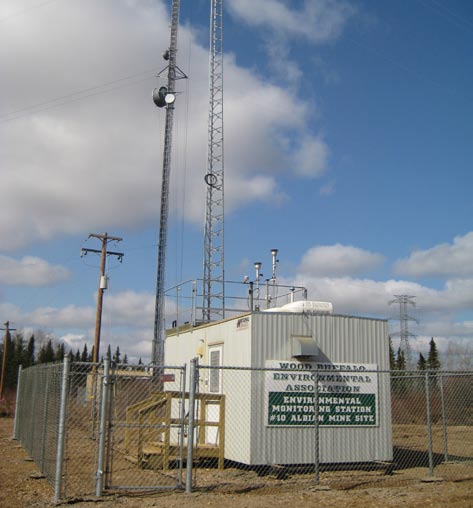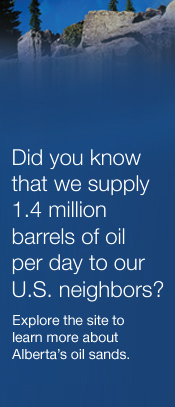Air
Monitoring air quality
 Air quality in the oil sands region is monitored 24 hours a day, 365 days a year across the region by the Wood Buffalo Environmental Association – a collaboration of communities, environmental groups, industry, government and Aboriginal stakeholders.
Air quality in the oil sands region is monitored 24 hours a day, 365 days a year across the region by the Wood Buffalo Environmental Association – a collaboration of communities, environmental groups, industry, government and Aboriginal stakeholders.
There are 16 continuous stations in the oil sands region and 42 passive industrial monitoring sites. The Government of Alberta also has a mobile unit that can be sent to “hot spots” when required.
Substances monitored at these stations can include particulate matter, ozone, oxides of nitrogen, sulphur dioxide, hydrogen sulphide, total reduced sulphur and carbon monoxide.
The Government of Alberta regularly audits monitoring stations and data throughout the region to ensure our data is accurate.
The Government of Alberta responds to every air quality complaint it receives.
Annual average concentrations of common air pollutants indicate that the region's air quality is not deteriorating despite an increase in emissions-related activities and population growth.
Alberta's Air Quality Index shows that air quality in the oil sands area rates as "low risk" at least 95 per cent of the time.
Air quality is generally improving in Fort McMurray. Concentrations of particulate matter, ozone, carbon monoxide and sulphur dioxide are decreasing.
Alberta has an hourly air quality objective for hydrogen sulphide (H2S) that allows us to detect and address H2S exceedences.
The Government of Alberta holds facility operators accountable for finding the root cause of H2S exceedences and the best way to mitigate them. The majority of exceedences have occurred near specific facilities and away from populated areas.
Air quality health index

Managing Air Quality
The Government of Alberta has established Ambient Air Quality Objectives as indicators of air quality in the province. These objectives are used to assess compliance near major industrial air emission sources, including those around the oil sands region.
Industry has invested heavily in emissions abatement technology to ensure that regional air quality remains within regulated limits.
The government holds industry accountable for emissions through regulations and approvals. Environmental Protection Orders may be issued in instances of noncompliance, which require industry to solve air quality issues.




